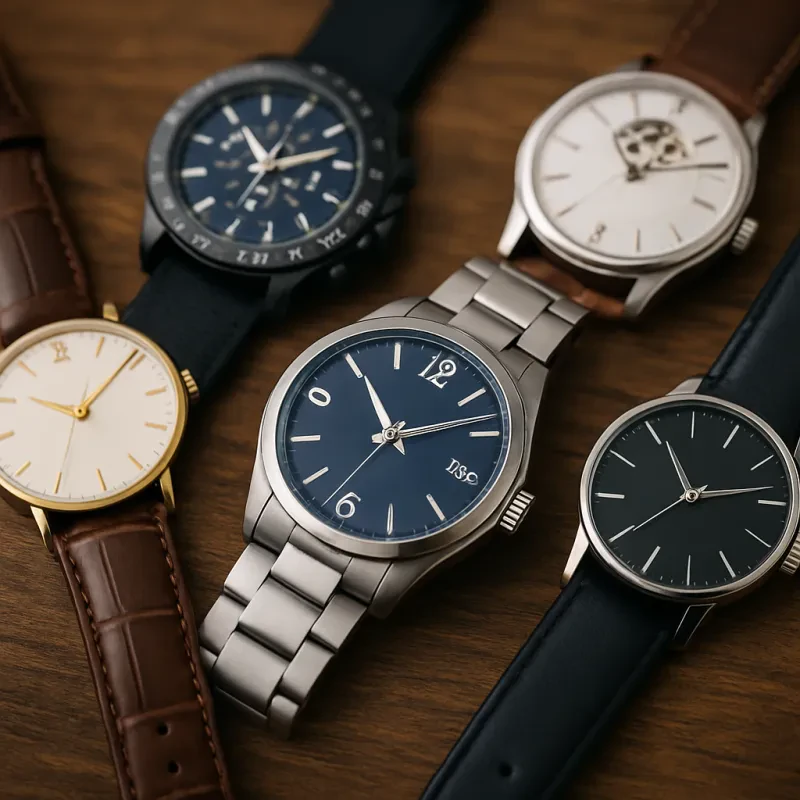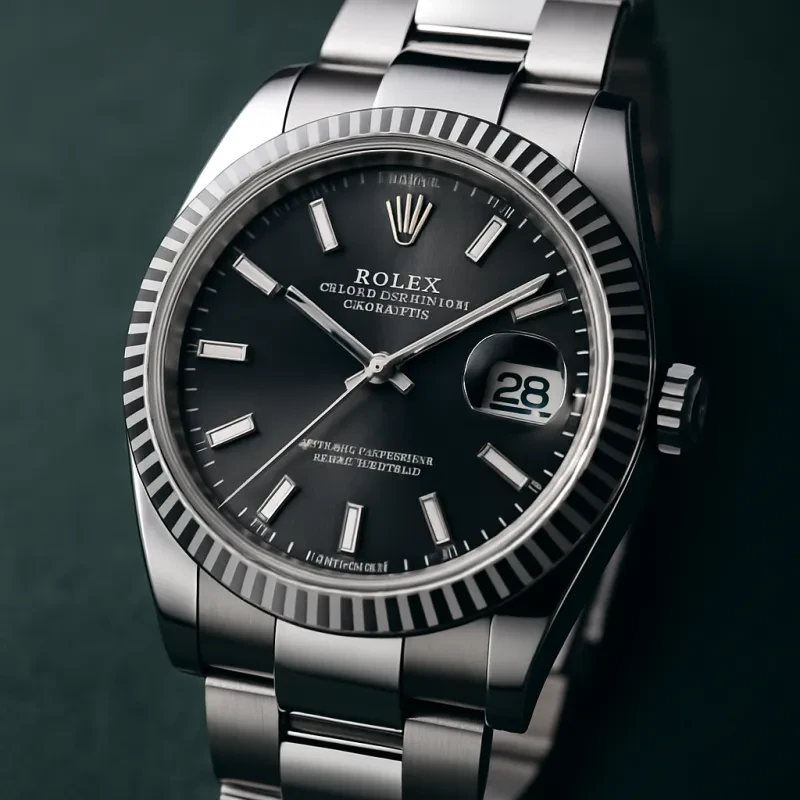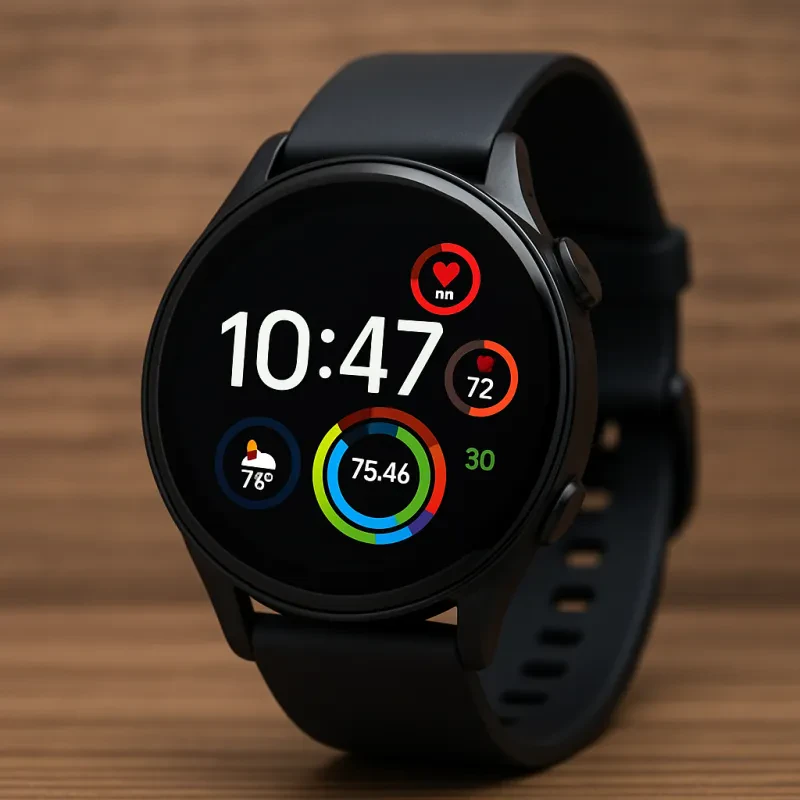The story of wristwatches begins in the late 19th century. Before that, people primarily relied on pocket watches to tell time. These pocket devices were elegant and often beautifully crafted, but they also had a significant drawback: they required both hands to use. As society became busier, the demand for a more practical timekeeping solution was on the rise.
The first wristwatches were designed for women, often as decorative jewelry pieces. In 1868, the Swiss company Patek Philippe created what is considered the first wristwatch for the Countess Koscowicz of Hungary. Crafted with delicate elegance, it was more a piece of art than a tool for timekeeping. For men, however, wristwatches didn’t catch on until a few decades later.
During World War I, the practicality of wristwatches was finally recognized by military personnel. Soldiers found it easier to check the time on their wrists while holding weapons or maps, making wristwatches essential for coordination. This shift in perception popularized the wristwatch among men. After the war, they transitioned into everyday fashion, quickly becoming a staple accessory.
As the 20th century progressed, innovations in materials and design transformed wristwatches. The introduction of quartz movements in the late 1960s made watches more accurate and affordable. This revolution led to the quartz crisis, challenging traditional mechanical watchmakers but ultimately expanding the wristwatch market. Regardless of the style—elegant, sporty, digital, or analog—wristwatches became an enduring symbol of both practicality and personal expression.
Designing Functionality and Style
When it comes to wristwatch evolution, the balance between functionality and style has always been a key consideration. Early timepieces were primarily designed for accuracy and reliability, serving the fundamental purpose of telling time. As technology advanced, watchmakers began to incorporate features that enhanced usability, such as luminous hands for night visibility and waterproof cases. These innovations not only improved the practical aspects of watches but also paved the way for creative designs.
As wristwatches transitioned from mere tools to fashion statements, the design drew influence from various art movements and cultural trends. The introduction of new materials, like stainless steel and ceramics, allowed designers to explore bold shapes and colors. Brands began to experiment with different styles, from elegant dress watches to rugged sports models, catering to diverse tastes and lifestyles. This creative freedom laid the foundation for a wide range of options available today, ensuring there’s a perfect timepiece for every individual.
Moreover, modern technology has played a significant role in blending functionality with style. Smartwatches now offer features like fitness tracking and notifications without compromising on aesthetics. Manufacturers understand that consumers want devices that not only perform well but also look good on their wrists. This merging of the digital and analog worlds has resulted in innovative designs that appeal to both tech enthusiasts and traditional watch lovers alike.
Ultimately, designing functionality and style in wristwatches is a dynamic process that reflects changing tastes and technological advancements. The timeless journey of wristwatch evolution showcases how these timepieces have transformed from simple timekeeping devices into versatile accessories that express personality and cater to everyday needs. This ongoing balance between utility and design is what keeps the world of horology vibrant and ever-evolving.
Innovations That Changed Timekeeping
Timekeeping has come a long way since the early sundials and water clocks. Throughout history, various innovations have significantly impacted how we measure time, leading us to the sophisticated wristwatches we know today. One of the first major breakthroughs was the mechanical clock, developed in the Middle Ages. These early timepieces utilized gears and weights to provide a more accurate measure of time. This invention laid the groundwork for future advancements by allowing people to rely on mechanical means rather than celestial bodies.
The introduction of the pendulum clock in the 17th century was another game-changer. Invented by Christiaan Huygens, the pendulum greatly improved accuracy, reducing timekeeping errors to just seconds per day. This advancement sparked a race among inventors and scientists to create even more precise timekeeping devices. As a result, time was finally becoming standardized across towns and cities, which was essential for navigation and transportation during an age of exploration.
Fast forward to the 20th century, when quartz technology took the stage. The invention of the quartz clock revolutionized timekeeping once again. Unlike mechanical clocks, which relied on gears and springs, quartz watches used the vibrations of a quartz crystal to keep time. This innovation not only improved accuracy but also made watches smaller and more affordable. Suddenly, wristwatches became accessible to the masses, shifting the perception of timepieces from luxury items to everyday essentials.
Digital watches hit the market shortly afterward, offering another leap in innovation. With the ability to display time in numbers and incorporate features like alarms and timers, digital watches changed how we interacted with time. These advancements have paved the way for smartwatches today, which blend technology and traditional timekeeping to create multifunctional devices that cater to our modern lifestyles. Each of these innovations has played a vital role in shaping wristwatch evolution, reflecting humanity's quest for precision and reliability in timekeeping.
Collecting and Caring for Watches
Collecting watches can be a fascinating journey, filled with history, craftsmanship, and personal connection. Each wristwatch tells a story, whether it's a sleek modern piece or a vintage treasure. Many collectors start by identifying their interests, whether it be a specific brand, era, or style. Researching the history and features of different models can enhance your appreciation and help you make informed purchasing decisions.
Caring for your watch is equally important in preserving its beauty and functionality. Regular maintenance is crucial, especially for mechanical watches. A simple rule is to keep your watch clean and store it in a safe place, away from extreme temperatures and humidity. Depending on the type of watch, you may need to wind it regularly or have it serviced by a professional to ensure that it continues to run smoothly.
When adding to your collection, consider the provenance of each piece. Authentication and documentation can significantly influence a watch's value. Keep an eye out for limited editions or watches with unique characteristics, as these often become sought after by collectors. Above all, collect watches that resonate with you personally, as the joy of collecting comes not only from ownership but from the stories and memories associated with each watch.
Lastly, consider joining watch forums or local collector groups where you can share your passion with fellow enthusiasts. These communities can provide valuable insights, facilitate buying and selling, and foster friendships. By connecting with others, you’ll deepen your appreciation for this timeless craft and enrich your collecting experience.


